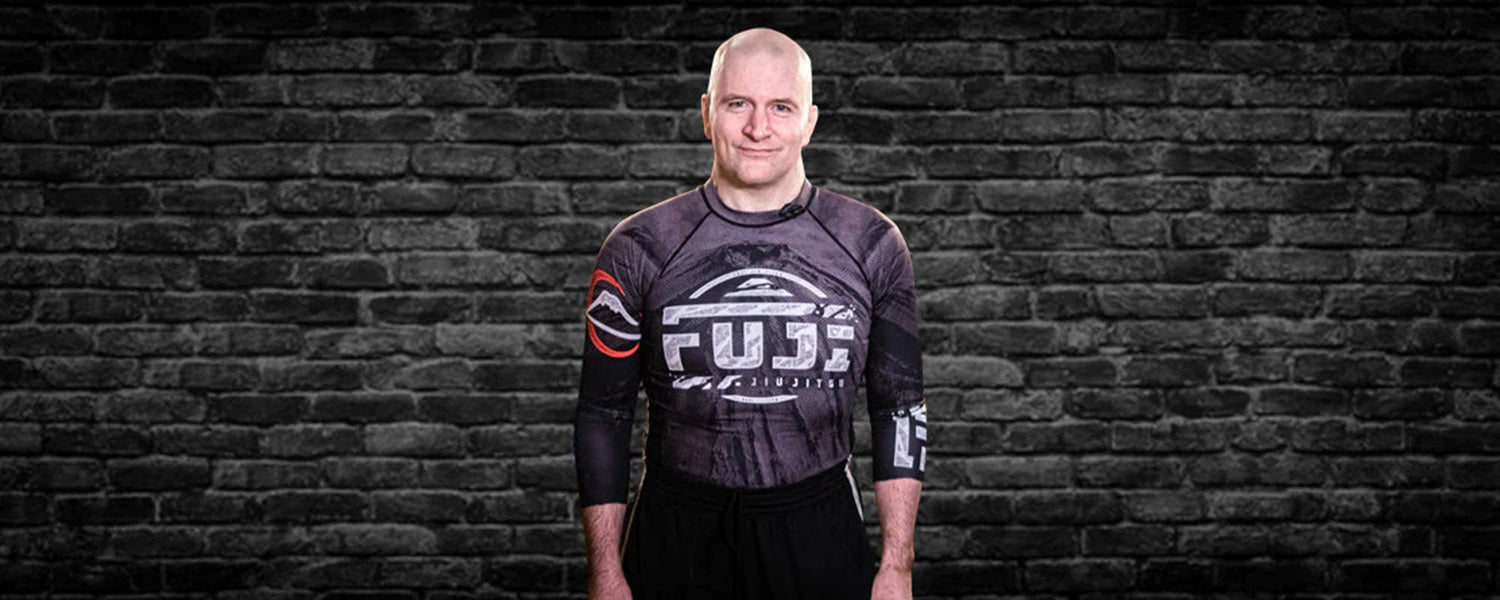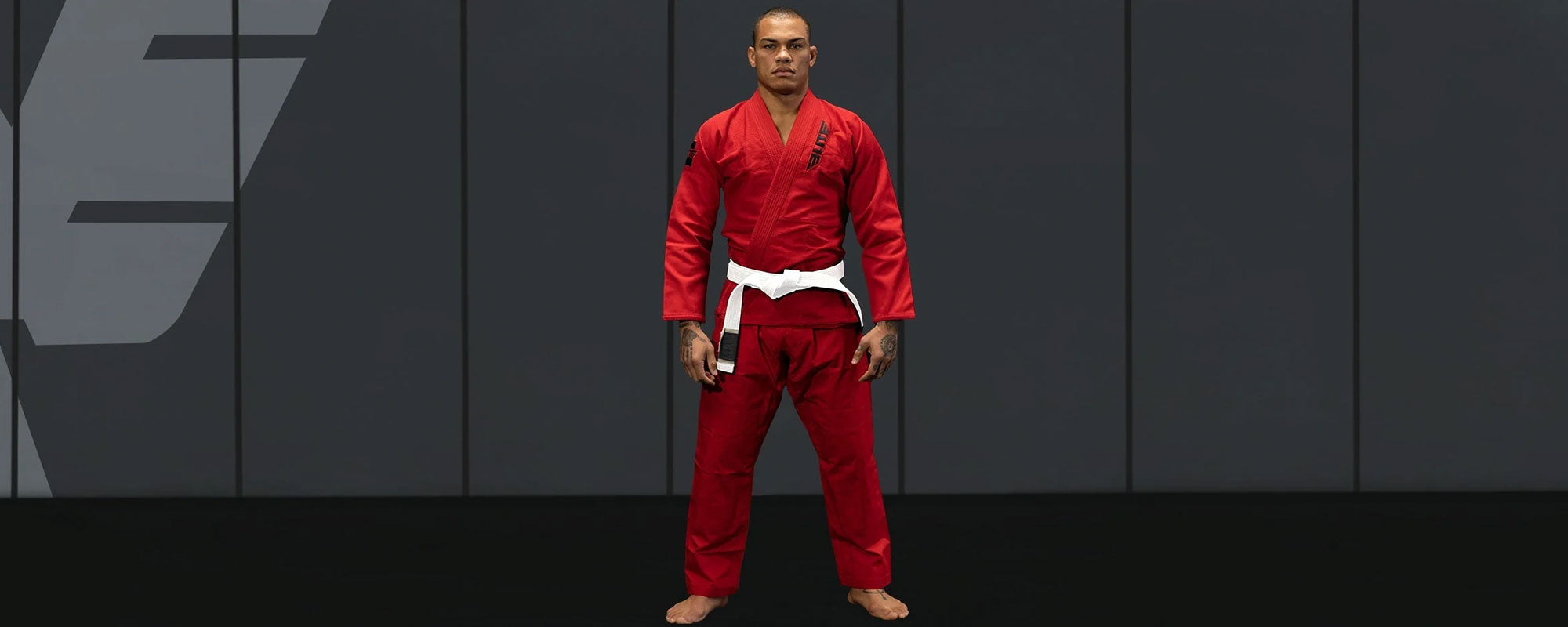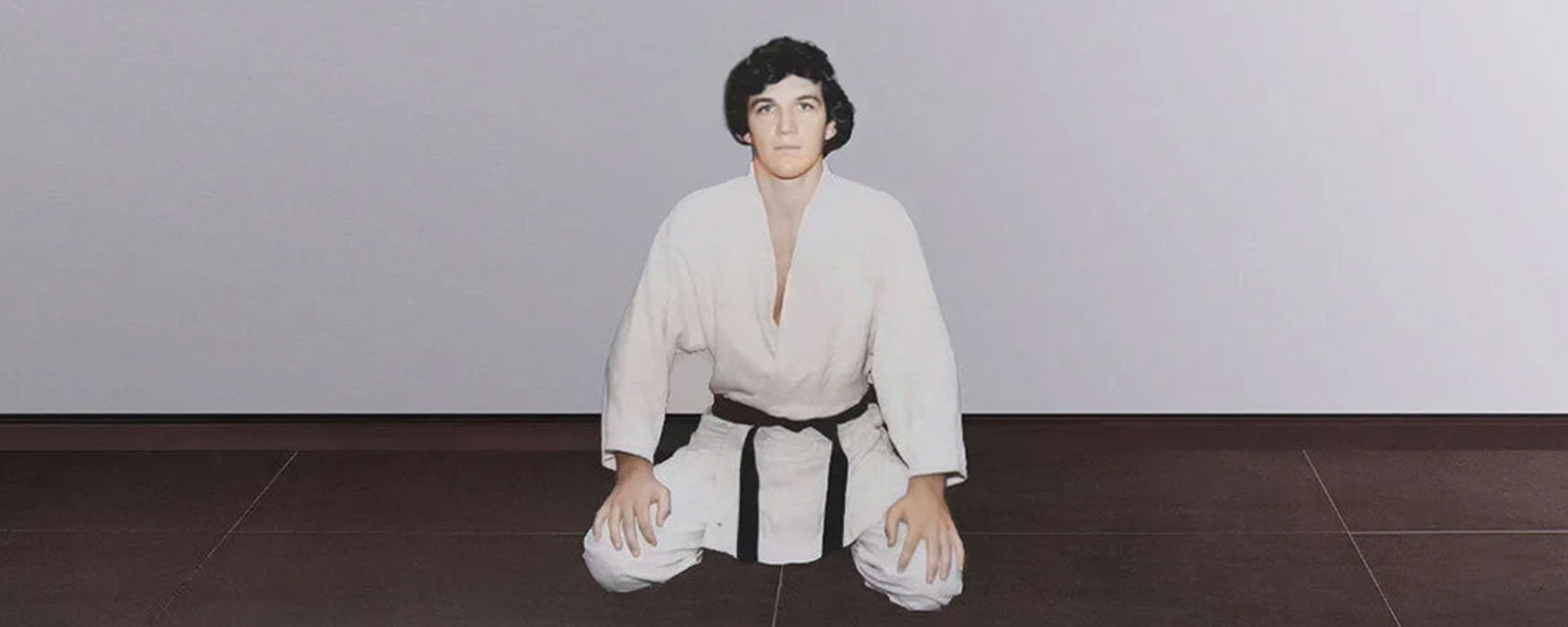Table of content
1. John Danaher’s Details

| Name | John Danaher |
| Nickname | N/A |
| Born | Washington D.C |
| Current Residence | Austin, Texas |
| Date of Birth | April 2, 1967. |
| Nationality | New Zealander |
| College/University | Columbia University |
| Weight | N/A |
| Height | N/A |
| Career Disclosed Earnings | $ 0 |
| Foundational style | Brazilian Jiu-Jitsu |
| Favorite Technique | Heel hook |
| Rank | 6th Degree Black Belt |
| Awarded By | Renzo Gracie |
| Lineage | Mitsuyo Maeda - Carlos Gracie - Helio Gracie - Carlos Gracie Jr. -Renzo Gracie - John Danaher |
| Team/Association | Renzo Gracie Academy Danaher Death Squad Sanabul |
2. John Danaher’s Biography
A BJJ mastermind, John Danaher never competed in any BJJ competitions, yet he became a champion. His injuries compelled him to focus on the most meaningful fight of his life - skill development against all odds. His exceptional BJJ skills made him the best instructor in the grappling world.
“Training is about skill development, not about winning or losing. You don’t need to win every battle. You only need to win battles that count.”
2.1. John Danaher’s Early Life & Amateur Fighting
On April 2, 1967, a jiu-jitsu master was born. John Danaher was born in Washington DC to New Zealanders. His father was a pilot in the Royal New Zealand Air Force and was stationed in the USA for some time during the Vietnam War. Soon after his birth, his parents returned to their homeland, Whangaparaoa, a small peninsula north of Auckland, New Zealand, where Danaher spent his childhood.
2.1.1. Education
After finishing high school, Danaher successfully pursued his bachelor's degree at the University of Auckland. Later, he enrolled in the Master’s Program in philosophy at the same university.
In 1991, Danaher went to the United States to earn a Ph.D. in epistemology at Columbia University in Manhattan.
2.1.2. Befriending Jiu-Jitsu
Danaher’s affair with jiu-jitsu started much later in life when he was 28 years old. It began when he was in New York working devotedly to get his Ph.D. During this time, he worked part-time as a club bouncer at various Manhattan nightclubs. He lifted weights to enhance his fitness and weighed around 250 lbs when he first experienced jiu-jitsu. Danaher observed that his bouncer colleagues utilized grappling techniques to handle fights. This piqued his interest in the combat style. He realized that these techniques have provided a fool-proof defense mechanism and decided to enroll in a jiu-jitsu class. One of his friends was already a jiu-jitsu practitioner and before Danaher could get cold feet, his friend took him to his first lesson at the Renzo Gracie Academy.
2.1.3. Jiu-Jitsu Training for Self-Defense
After the first lesson, Danaher was satisfied with the potential of jiu-jitsu as a self-defense tool and decided to start BJJ training. He wanted to learn and use it to his advantage in a brawl with a drunk client that created problems for him at his doorman job. With little to no experience. Danaher had a lot to learn to figure out how the basics of grappling worked.
He never thought highly of wrestling, but he couldn’t turn a blind eye to the value of jiu-jitsu. The promising self-defense techniques offered by the martial art pushed Danaher to train hard, but he never really enjoyed it.
2.1.4. Embracing the Art of Grappling
Danaher began to take a genuine interest in the sport after the Renzo Gracie Academy bid farewell to its two most distinguished instructors, Matt Serra and Ricardo Almeida.
This vacancy was a once-in-lifetime opportunity for Danaher who was invited to fill the position. Still a purple belt, Danaher was determined to become the best coach of the BJJ generation. He had previously taught classes when Renzo was traveling for competitions. He never competed in any tournaments but dedicated his life to mastering the teaching aspect of Brazilian Jiu-Jitsu
2.1.5. Danaher’s Competition-Restrictive Injuries
Danaher didn’t choose to stay away from competitions. His injuries made it impossible to compete. He was born with a deformed knee cap. Due to this deformity, he was vulnerable to serious knee injuries throughout his early years. In the 1980s, Danaher suffered a severe knee injury while playing rugby. The recovery process demanded surgical intervention.
His injured knee was subjected to multiple surgeries that resulted in deformed ligaments and artificial shortening of his legs. This reduced Danaher’s ability to extend and bend his knee and left him with an unbalanced gait.
As he got older, the imbalance caused more health problems for Danaher. His gait put extra strain on his left hip, leading to acute osteoarthritis. In 2015, Danaher underwent a replacement surgery to treat his damaged hip.
2.2. John Danaher’s BJJ Instructorship
2.2.1. The Rise of Danaher as Coach
Danaher was a workaholic, and he never stopped till all his goals were achieved. His dedication to his new role kept him on the mat for up to 14 hours a day. Renzo Gracie described Danaher’s obsession with the sport,
“He does jiu-jitsu every day; we can’t get him out of here. I think he would come in on Christmas if we would let him.”
2.2.2. Devotion Is Key to Black Belt
Over the years, Danaher’s responsibilities at the academy grew and he became a full-time instructor. His tenacity and relentless hard work as an instructor won him the auspicious black belt on April 2nd, 2002.
2.2.3. The Champion-Maker
Despite his unsurpassed grappling skills, Danaher never competed professionally due to his injuries. The mainstream jiu-jitsu circuit began to celebrate Danaher as a coach after his students won success in international tournaments.
He also worked closely with renowned MMA fighters and polished their skills to such an extent that they have become undefeatable in today’s MMA world. Some of the fortunate MMA legends include Georges St- Pierre, Jake Shields, and Chris Weidman.
2.2.3. The Danaher-Death Squad
Danaher coached a group of influential fighters at Renzo Gracie Academy. The group was known as the “Danaher Death Squad” and included grapplers with impressive skills. The squad included famous names such as Gordon Ryan and his younger brother Nicky Ryan, Garry Tono, and Nick Rodriguez. All of these athletes had the honor to compete and win multiple world championships organized by IBJJF, ADCC, EBI, and others. These athletes have a huge fan following due to their outspoken, bold personalities.
2.2.4. Brand Ambassadorship & Release of Instructionals
In 2018, Danaher became a brand ambassador and consultant at Sanabul, a well-known combat sports brand. He also released a series of instructionals called “Enter the System,” “Go Further Faster,” and “From Feet to Floor.” With these instructionals, Danaher revolutionized the instruction methods of grappling. He brought single, distinct techniques under one umbrella to demonstrate a connection in all BJJ moves.
The “Enter the System” series is dedicated to John Danaher’s advanced level leg and arm attack systems. For beginners, he has released the “Go Further Faster” series that covers the jiu-jitsu fundamentals including half guard, guard passing, closed guard, pin escapes, guard retention, open guard, half guard passing, and dynamic pinning concepts.
The main purpose of Danaher’s series is to teach defense and escape. Once a jiu-jitsu practitioner becomes capable of defending against submission attempts and escaping from basic positions, they can then develop their jiu-jitsu game on their own.
2.2.5. Leaving Renzo Gracie Academy
In 2020, Danaher decided to leave his permanent position as an instructor at the Renzo Gracie Academy and bid farewell to the institution. He contemplated moving to Puerto Rico to establish a new gym with his best students. Gordon Ryan announced that the tentative opening date for the new academy was scheduled for March 2021, but the school never happened. Instead of the official opening date of Danaher’s gym, a piece of shocking and rather sad news came.
2.2.6. The End of Danaher Death Squad
In July 2021, John Danaher announced that the Danaher Death Squad had split up. The main reasons behind the split were - “the physical location of a future academy, personality conflicts, conflicting values, and an inevitable tension between the team brand and the growing individual brands of members.” - as explained via a succinct statement.
2.2.7. The New Wave Jiu-Jitsu
Later in July 2021, John Danaher moved to Austin Texas. With his student Gordon Ryan by his side, Danaher announced the launch of their new gym/team: The New Wave Jiu-Jitsu. The new squad did not include Nicky Ryan, Craig Jones, Nick Rodriguez, and Ethan Crelinsten because they proceeded to form a B-Team workgroup. However, Garry Tonon and Oliver Taza from the DD squad chose to join Danaher’s new venture.
3. Danaher’s Leg Lock System (Enter the System)
Danaher’s unique systems of leg locks and lower body attacks added to his growing fame and credibility. In the early 2000s, Dean Lister, an American grappler, introduced Danaher to the leg locks when he came to train at Renzo Gracie Academy for two weeks. Lister connected his success in competitions to leg-based attacks, and this revelation inspired Danaher to develop them further.
Danaher used the leg-lock system to consolidate an array of distinct positions into a series of movements that flowed together naturally and were easy to execute. His students soon picked up his teachings without any problems. The leg lock principles laid down in Danaher’s “Enter the System” instructional helped his students to achieve profound success in their professional jiu-jitsu careers.
Before Danaher introduced his systems, the jiu-jitsu community didn’t give much importance to leg locks. These locks were considered ineffective and impractical in a real fight. Danaher’s students showcased the usefulness of the leg-attack systems by winning almost every competition with a ruthless leg-lock.
After the overwhelming success of his leg-lock system, Danaher developed systems for arm attacks including kimura and armbar variations, rear strangle-based attacks, front headlock, guillotine attacks, and triangle attacks.
4. Danaher's Front Head Lock System (Enter the System)
In his “Enter the System” instructional series, Danaher explains the front headlock system from every position. He advises that a front headlock should start with a standing position. The athlete should then kneel or transition into seated variations of the guillotine and strangle attacks using the head and arm.
For Danaher, the front headlock system is the point of initiation. This system opens up other submission techniques. This is because the opponent always gets defensive during a headlock, making submission attempts easy.
5. John Danaher’s Jiu-Jitsu Rules
Danaher’s four-step strategy helps jiu-jitsu beginners to develop their game. The guide provides explanations to help them solve any jiu-jitsu problem they come across.
According to Danaher, all BJJ fighters move back and forth between these four steps to achieve submission/victory. The golden principles of BJJ (takedown, guard/leg pass, pinning/dominating, and submission) are applied in every fight by every martial artist.
5.1. Takedown
Danaher always advises his students to start combat from a standing position. In the standing position, fighters have complete access to their limbs and this enhances the energy required to strike which can be dangerous.
To employ this energy, it is important to either take our opponents down to the ground or allow our opponents to take us down to the ground. When the fight gets to the ground, the excess kinetic energy and the potential danger from it are hampered. The only threat now lies in the opponent’s legs. A trained jiu-jitsu athlete may use his legs to attempt a number of guard variations, submissions, and sweeps.
5.2. Address the Legs or Pass the Guard
If you have taken your opponent down, then you possess the dominant position. Try to trap their legs between you and pass beyond their legs. Once past the legs and after achieving the first two primary BJJ steps, takedown, and guard pass, Danaher encourages the combatant to move through a series of pins and positions. Positions like side control, knee on belly, and mount allow different levels of striking potential while the opponent is pinned.
In case your opponent takes you down, the main goal is to keep the power of your legs in play. This can be done in a defensive or attacking manner. To achieve this goal, the combatant may utilize armbars and triangles.
5.3. Achieve Dominant Pinning Position
The winning conditions arise when a combatant strikes down from the mount position. The opponent will either bear the brunt of punches or will expose their back to you to protect their face from the strikes. After nullifying your opponent’s power and strikes, the combatant can then proceed to gain absolute control of the opponent’s back.
5.4. Secure a Submission
From this dominant position, the athlete can successfully attempt a joint lock or a strangle submission on the opponent.
6. John Danaher’s Main Achievements - His Star Athletes
There is a long list of jiu-jitsu high achievers under John Danaher. The list below reflects the competence and talent that John Danaher has produced for the progress of the jiu-jitsu world.
| Student | Achievement (Events) |
|---|---|
| Georges St. Pierre | UFC |
| Chris Weidman | UFC |
| Jake Shields | UFC |
| Eddie Cummings | ADCC, EBI, Polaris, Fight 2 Win |
| Garry Tonon | ADCC, EBI, Polaris, Fight 2 Win, One FC/MMA |
| Gordon Ryan | ADCC, KASAI, EBI |
| Nicky Ryan | ADCC, KASAI, Fight 2 Win |
7. Top Fights (Video Links)
Photo Credit: @danaherjohn














Leave a comment
This site is protected by hCaptcha and the hCaptcha Privacy Policy and Terms of Service apply.